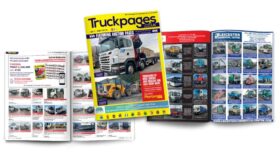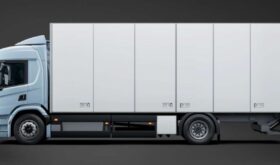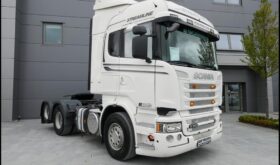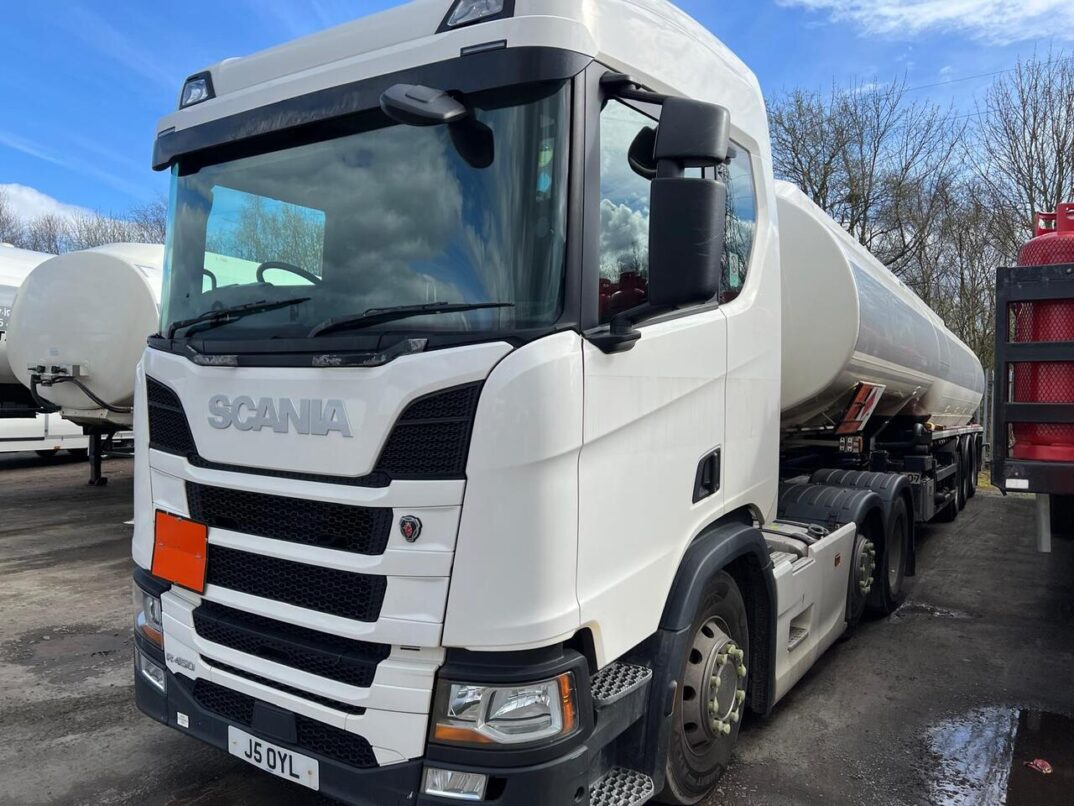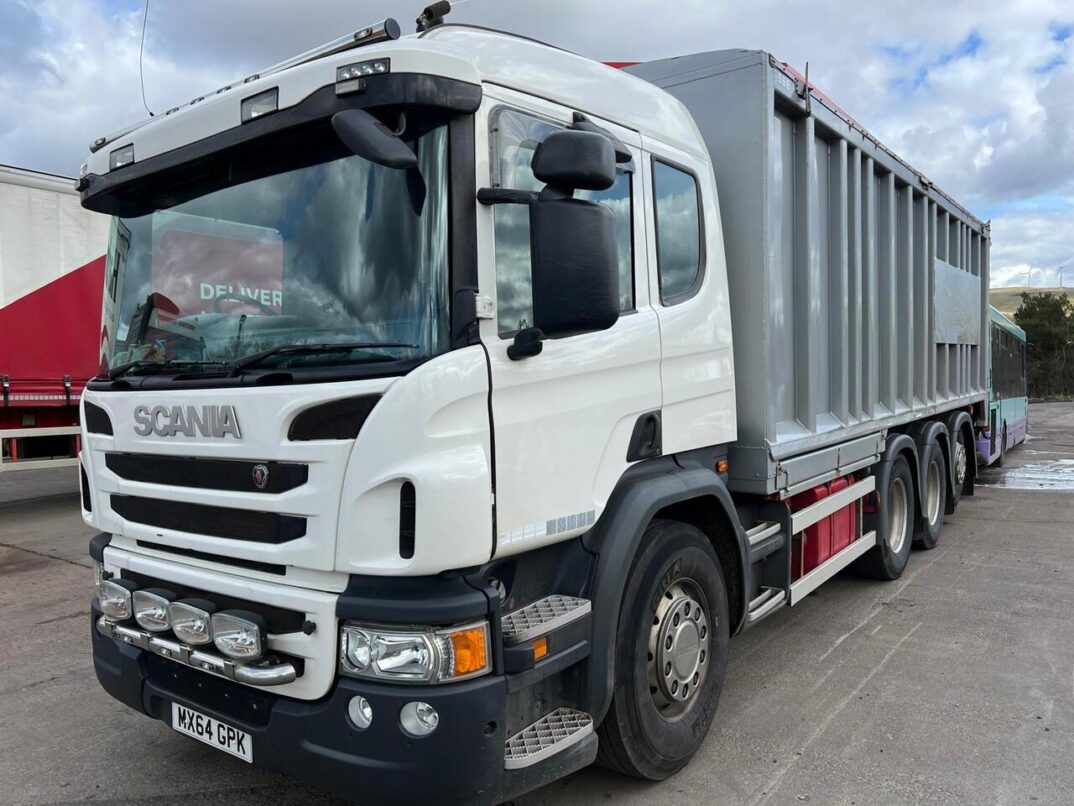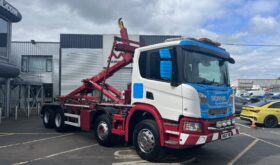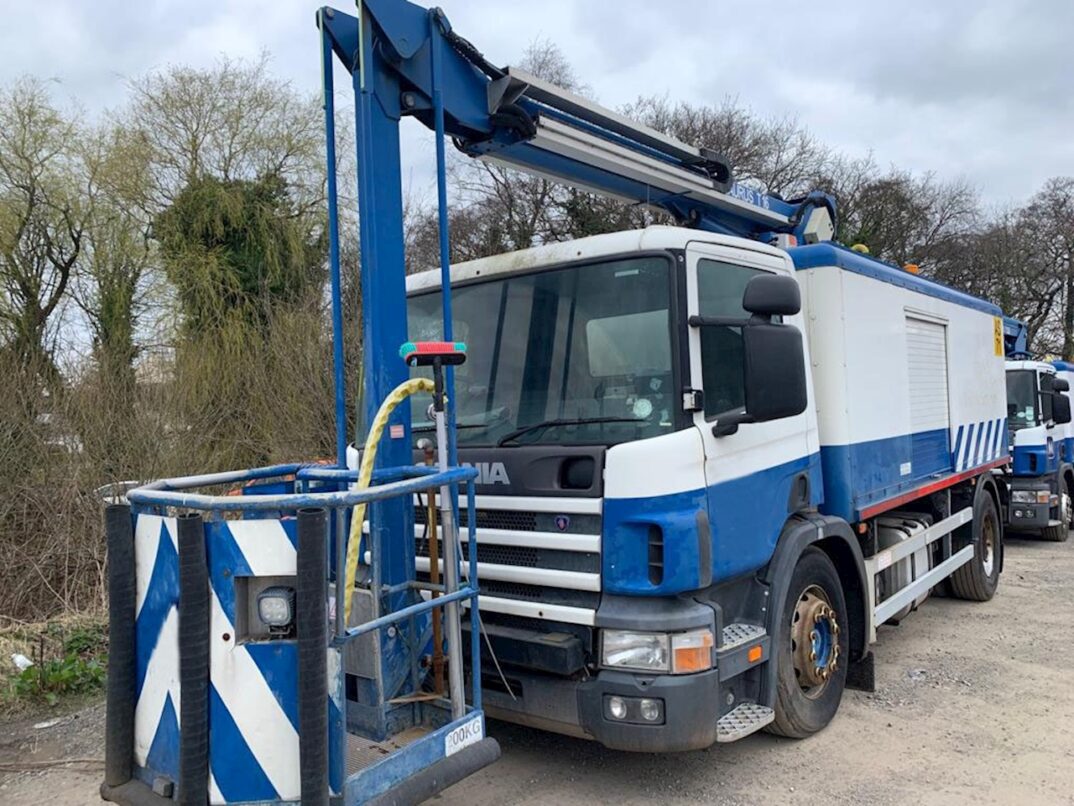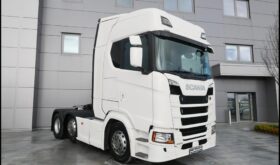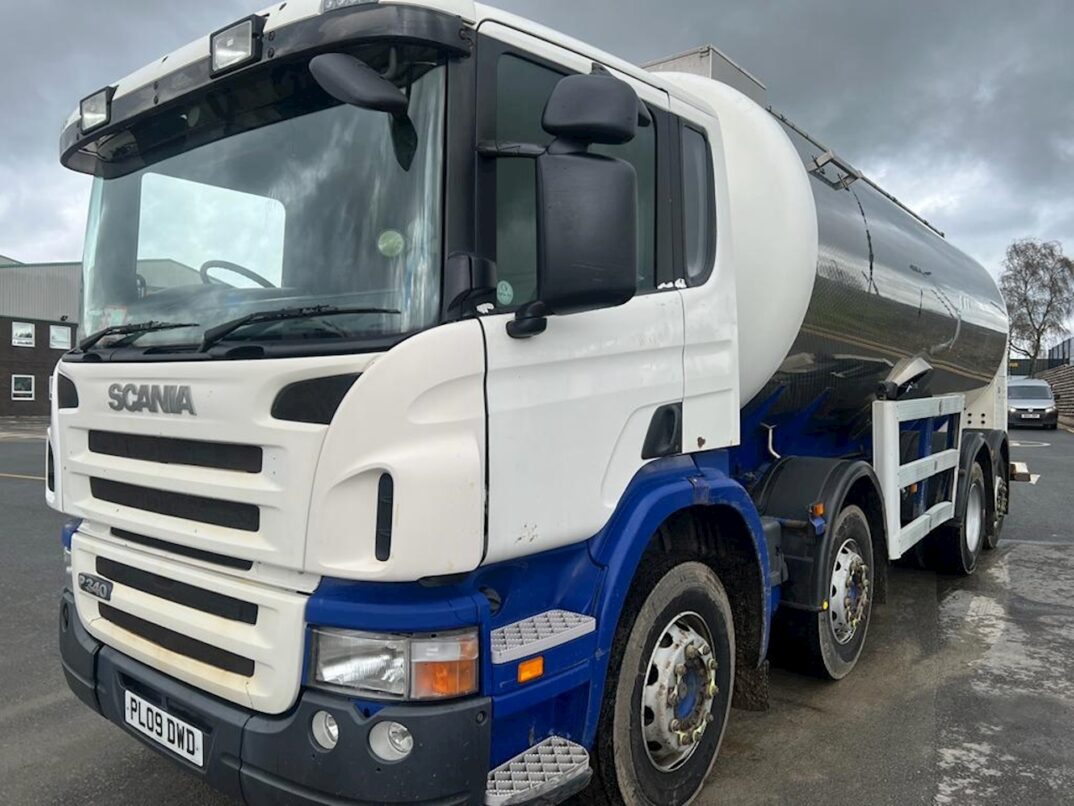Scania Trucks for Sale (455)
Buy your next used Scania truck from a choice of hundreds across the UK. Viewed by many as the premium truck brand, Scania is the darling of owner drivers worldwide. This aspiration stems from the company’s famous V8 Topline tractor units, but still strikes home for the canny tipper operator running 8×4 P Series tippers.
Why Choose Scania?
Scania is currently selling plenty of new trucks – they currently have the second largest share of the truck market in the UK. You will find used Scania trucks for sale of all shapes and sizes at Truck Pages – browse the most recent on this page or carry out a more detailed search. From the early 2 series trucks – now collectors’ items, to the 3-series, 4-series and the newer model lines from the P Series, G Series, R Series and the recently launched low cabbed L Series and flagship S Series Scanias. Looking for all V8 Scania trucks for sale?
More Scania Trucks Info
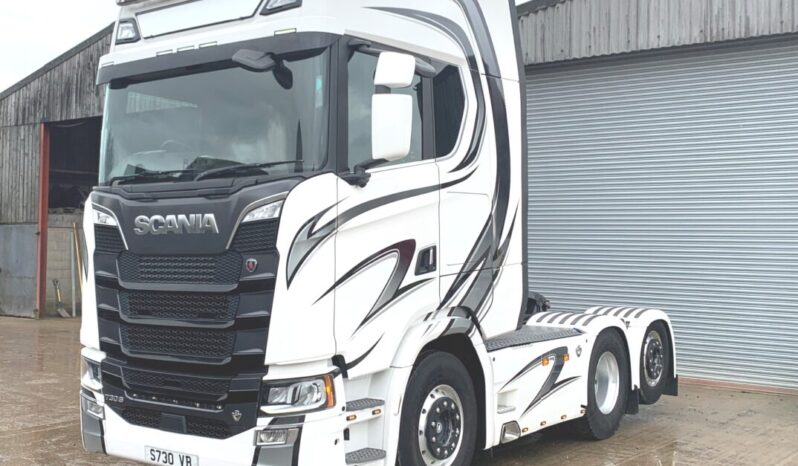
Scania’s History in Brief
With roots back in 1891, Scania has a long manufacturing heritage. Initially making push bikes, the company with the word ‘Scania’ in its name, (Maskinfabriks-aktiebolaget Scania) merged with a manufacturer of railway carts in 1911 and Scania was born. Scania had already started successfully manufacturing trucks. The origin of Scania’s logo is the head of a griffin, the coat of arms of the Swedish region Scania (Skåne), centered on a three-spoke bicycle chainset.
The company went from strength to strength in the Swedish market, successfully competing with Volvo – leaders at the time.
Overseas expansion (and the successful and money-spinning importing of VW Beetles into Sweden) saw further growth in manufacturing facilities.
The last time Scania made a loss was in 1934.
In 1991 the ‘Investor’ organisation took total control of the business (owned by the Wallenburg family it had an interest in the business since a 1921 finding round.) only to float 50% of the shares five years later.
Volvo bought plenty of these shares, but the EU stopped Volvo taking over Scania. At this time Volkswagen stepped in and bought shares and by 2004 Scania had bought back all the shares that Volvo had owned.
In a new chapter in 2006, MAN Truck & Bus attempted a hostile takeover of Scania but didn’t get very far. In the meantime, VW were busy buying more shares in Scania then, two years later in 2011, VW bought MAN and by 2014 had acquired all the shares in Scania.
VW created an umbrella brand, ‘Traton Group’ to look after its interests in MAN, Scania and the South American truck manufacturer’ Volkswagen Caminhões e Ônibus’.
Scania’s Trucks
Looking back, there was a lot of activity before and during the war, but the story of Scania trucks really gets going in 1951 with the launch of the L51 Drabant.
Next came the 75 Series in 1958 – so successful that the company continued to manufacture it until 1980.
Prior to 1963, all Scania’s trucks were ‘conventional’ bonneted trucks. This ceased with the introduction of the LBS76, forward control truck.
It wasn’t until 1968 that Scania introduced the LB100 with a hydraulic tilting cab – this truck now starts to resemble the trucks we see on the roads today.

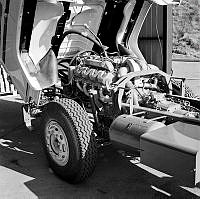
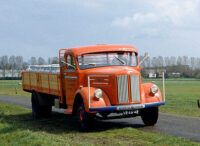
More than fifty years ago Scania introduced their now infamous V8 engine – read more about Scania’s V8 50th anniversary edition here: It was in this year that the word ‘Scania’ appears on its own on the front o their trucks.
1972 sees the bonneted L140 and LS140 trucks equipped with the V8.
1980 saw the biggest range relaunch to date with the ‘GPRT’ range – also known as the Series 2. This is the range on which today’s Scania models are named.

The Series 3 comes along in 1988 with the ‘Streamline’ cab range appearing in 1991. Compared to previous models it cuts the drag factor by 12–15 percent and fuel consumption by 4–5 percent.
1995 saw the introduction of the 4 Series with help from Italian automobile styling house Bertone – many of these are still on the UK’s roads today.
The next major launch was the R Series in 2004 – this was followed by a reneal of the ‘PRT’ range The R-series (big forward-control cab) is followed by the P-series (smaller forward-control cab) and the T-series (bonneted).
R Series
2009 saw a facelift to the R Series which broadly lasted until the new range was launched from 2016 which also introduced the top of the range S Series.
The whole range underwent renewal in 2016 so trucks from 2017 onwards are the latest – looking for the most up to date of the V8 family? Then 2017 saw the new generation of Euro 6 V8s from Scania introduced.
The Current Range
The range launched in 2016 contains the G, L, P, R and S groups plus the XT for off-road applications – these model groups reflect the cabs that are used on the trucks.

Scania S Series
A brand new model in 2016, there are not many used examples around in the UK market yet. This will change over time as we see more of this flagship model appearing on UK roads.
A top power machine, the pin up for every wannabe owner driver, the S Series is available with a standard sleeper cab or a Highline Version. Outputs range from 370 to 540 hp for the 13-litre Euro 6 engine, whilst the 16-litre starts at 520hp rising to a whopping 730hp – all of these trucks can run on diesel or HVO all running SCR only – except the top power 730 that adds EGR to keep the emissions down.
As standard, operators choose from an 8/9 speed range change or a 12 (12+2) range splitter and can all be fitted with Opticruise and a retarder. Available not just as a tractor unit, but also as a rigid up to 10×4, Scania really has considered all applications for this truck.
In an agreement with Mercedes-Benz passenger car division, Scania has to refer to the S-Series not as the S730 but as the 730 S (in case we all confuse it with the S Class Mercedes car!) Read more here.
Scania R Series
The long-time flagship of Scania’s range, the R Series is still a firm favourite with owner drivers and fleet operators alike. Originally launched in 2004, the current R Series from 2016is available with no fewer than five cab types – a low day cab, a mid-height day cab, a brand new ‘low sleeper’ with room out the back, but not on top plus the normal mid-roof sleeper and, of course the Highline sleeper cab.
Unlike the S Series, the R Series can be specified with the 9-litre engine with power from 280 to 360hp – there won’t be too many of these on the UK’s roads and available for sale on Truck Pages. You are far more likely to see the 13-litre SCR only Euro 6 with outputs from 370 to 500hp. The big V8 is still available at 16-litres and outputs of 520 to 730, like the S Series, the 730hp R Series also needs EGR as well as SCR.
Green buyers should keep their eyes peeled for the gas versions of the R Series – available both on the 9-litre at 28 and 340hp or the 13-litre at 410hp.
The choice of transmissions is exactly the same as for the S Series, as are the chassis configurations.
Looking for an older Scania R Series?
We can’t all afford a post 2016 Scania R Series- so what older versions are available? The important questions to ask the seller of an R Series is the year of manufacture and the Euro level of the truck. Scania were very early in releasing their Euro 6 R Series – two years ahead of most manufacturers so please look carefully at the specification.
After launch in 2004, the first major facelift was in 2009 – but remember this date was when the left hand drive models were revealed, so UK right hand drive versions usually appear some months later. Check carefully if the 2009 model you are looking at is the outgoing model or the new version. Prices should reflect this.
Scania P Series
Prior to the 2004 launch of the modern-looking P Series range, Scania was using a numbering system to denote the series. Let’s be honest, nobody really understood the model designations prior to the sensible 2004 change. Gone was the likes of a P94M300 – from the 4 series range – this was replaced with the ‘P’ designating the cab size and the horsepower. The P Cabs were made available with a day cab, sleeper, short cab and a crew cab.
2005 saw the first P Series Scanias with Euro 4 engines fitted using EGR – well ahead of the competition. Scania triumphed in this regard again in 2007 with their Euro 5 without using SCR.
2014 was the year for Euro 6 roll out of the P Series. Again, Scania were early bringing the engine to market. In 2016 Scania renewed their whole range, including the P Series.
Scania G-Series
A newcomer to the Scania lineup, the G-series was launched back in 2007. It is available with a choice of three day cabs – short, low and normal plus three sleeper cabs, low, normal and Highline. There is a choice of two engines – the 9-litre with outputs from 280 to 340hp or truck buyers can opt for the 13-litre Euro 6 with outputs from 370 to 540hp – no Scania V8 in the G Series range.
Choose from an eight-speed range-change gearbox or a 12-speed Range-splitter transmission. You will find used examples of G Series tractor units and rigids with a range of axle configurations – right up to a 6×6 tractor unit or 10×4 rigid.
As with all trucks in Scania’s range, the G Series was given a facelift in 2016 as part of the range review.
Scania L Series
The newest member of the Scania family, launched at the end of 2017, the L-Series is designed for urban operation. With its low entry cab, it is perfectly suited to refuse collection applications with easy access and improved passenger door visibility.
Despite the low access, the cabs still come in a choice of three roof heights, low, normal and high. The floor height is just 80cm, but used truck buyers should keep eyes peeled for the ‘kneeling’ version which brings the height down to one step. Check this out by putting on the handbrake – this should activate the kneeling function.
Initially launched with the 9-litre only, 2020 saw the introduction of the lighter 7-litre engine as an option in the range. Choice of gearbox is the automated Scania Opticruise or the fully automatic Allison transmission.
Scania XT Range
The Scania XT truck range has been designed for use in the construction industry. Launched at the end of 2017, the XT range is essentially an extension of the existing model series. Truck buyers can specify a P-Series XT or even an S-Series XT.
What the used truck buyer will get is a version of the normal truck that has been designed for on/off road use.
If you are searching for a used Scania XT here at Truckpages, we recommend you look in the relevant range first – G-Series then filter for an XT.
Latest Scania Trucks News
What’s The Most Fuel Efficient Tractor Unit in 2024?
This question is so complicated and operational and geographical factors will always influence fuel economy but the clever people at a couple of German truck magazines believe that they have the most comprehensive test around. The ‘Green Truck comparison test’ has been running fourteen years now and applies a clever formula that covers all the relevant aspects of being transport-efficient and sustainable: fuel consumption, average speed, used AdBlue volume and the weight of the truck (the lighter the better). The results should therefore give any potential long distance tractor unit buyer a steer in the right direction regarding the most…
Truckpages Issue 217 is out now
Normal service is resumed as we feature a beautiful Scania V8 tractor unit for sale on this week's front cover. This example is from MV Commercial's stock and is the 2020 S Series 650S version with a rear lift tag axle in addition to all the bells and whistles including Kelsa bars, air horns, side skirts and beacons. If this is too rich for your blood, check out the MV advert on the outside back cover for a slightly older 2019 V8 Scania tractor unit - an R Series R520 with a midlift axle but still has all the bells…
Who Owns Who in the Truck World?
The automotive industry in general is constantly involved in buying and selling competing businesses. This is absolutely the case in the worldwide truck manufacturing industry. Looking at the short list of truck makers currently selling their vehicles in Europe you would be tempted to think that every single one is independent of each other. You would be wrong. DAF Trucks now owned by PACCAR after some tumultuous years in the 1990s Let’s take a look at all of the major manufacturers operating in Europe: DAF Trucks Isuzu Trucks Iveco Trucks MAN Truck & Bus Mercedes Trucks Mitsubishi Fuso Trucks Renault…
Truckpages Issue 215 is out now
This week sees a useful-looking 2012 Scania G360 8x2 rear lift crane truck. It's fitted with a Fassi 54 tonne metre crane with a cabin spec body. New tyres throughout shows that this truck is ready to go out to work and can be bought from Plantmaster - check out the details on page 10 of this week's magazine Click to Read Page Turn Magazine Click Image to Read Use the form at the bottom of the page to add your email address to be advised every time the page-turn is published. Please contact us if you would like to…
More Electric Scania Truck Options
Scania is expanding its range of battery-electric vehicle (BEV) trucks by introducing more electric vehicles, axle configurations and cab alternatives, plus a number of power take-off solutions. Scania’s range is now beyond the initial levels where only the most common trucks could be specified. Today Scania’s offer covers a range of applications and operations. “We are steadily adding more and more customer value and specification choices with our continuous introductions,” says Fredrik Allard, Senior Vice President, and Head of E-mobility at Scania. “And the customers reward us with increased interest since it is now obvious how well these trucks serve…
Lot No: 3240 *BANBURY* TOPLINE CAB, A/C, MID-LIFT, TWIN FUEL TANKS, SLIDING 5TH WHEEL, FRIDGE, MICROWAVE MoT: 2024-10-31* Price is Plus VAT * Reg No: WX16YPO * No. of former keepers: 2 Weekly...
*LIVINGSTON* SLEEPER CAB, A/C, THOMPSONS BODY, BINOTTO GEAR, WEIGH SYSTEM, SHEETING SYSTEM* Price is Plus VAT * Reg No: SF68OPG * No. of former keepers: 1 * Seller: DIRECT FINANCE COMPANY* Weekly auctions featuring...
*LIVINGSTON* SLEEPER CAB, A/C, MID-STEER, WEIGH SYSTEM, THOMPSONS BODY, BINOTTO TIPPER GEAR,* Price is Plus VAT * Reg No: SF68OPE * No. of former keepers: 1 * Seller: DIRECT FINANCE COMPANY* Weekly auctions featuring...




